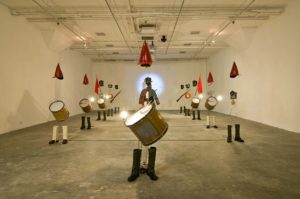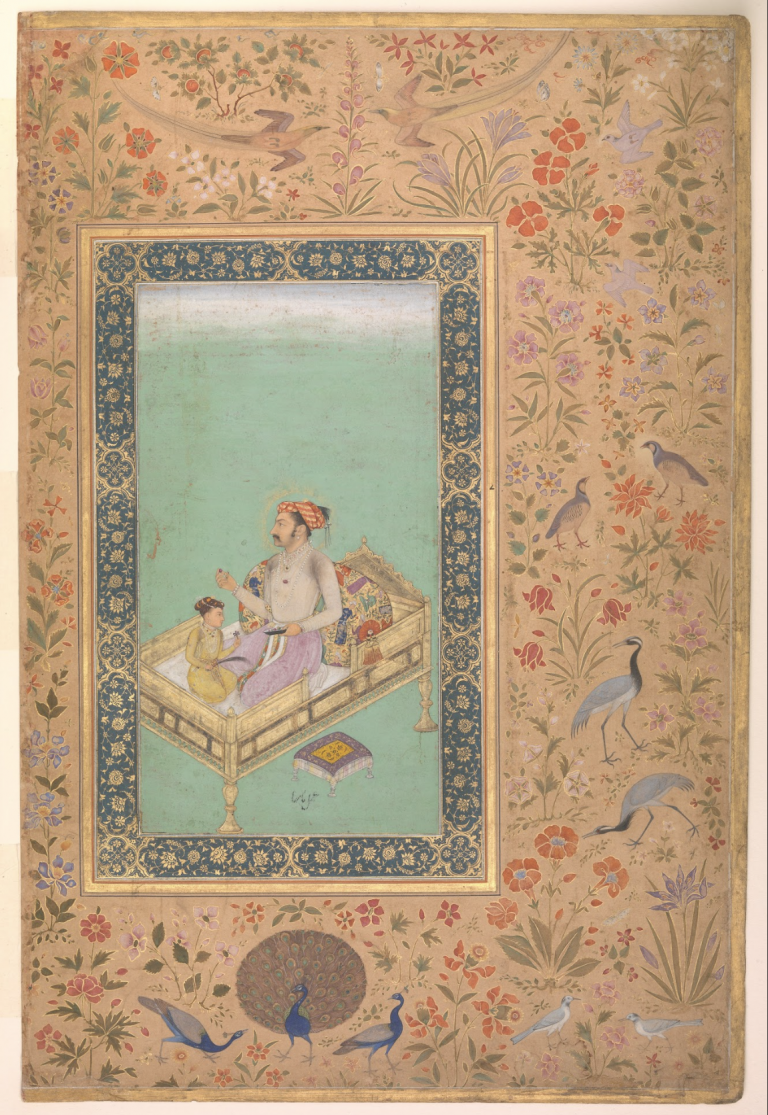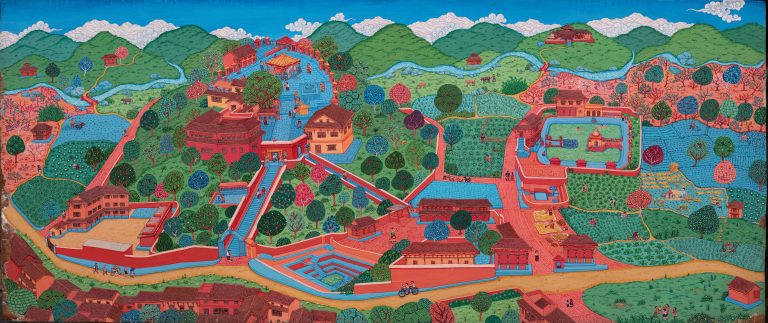Agustinus Kuswidananto aka Jompet created a series titled Java’s Machine since mid of 2008. This new media work consists of video and sound installation, sculptural figure and site-specific performance projects that have developed into some series of work exhibited internationally in some biennales and many other international exhibitions.
The initial work was an installation of fifteen Javanese Kingdom soldiers and two channel videos. The Royal Kingdom in Yogyakarta now is mostly seen as cultural symbol, and has reduced in political power especially since the nation became a republic. Jompet is interested to use those visual cultural symbols to investigate the phenomenon of hybridisation in Javanese society where all the different values, from animism, syncretism, religiosity, modern machine to industrialism, were being perceived as roots of the people’s identity.

Yogyakarta, a small city in Java, Indonesia, has been notifying an interesting history of Modern Indonesia, especially related to the history of (post) colonialism. Geographically, Java Island lies between two continents and two oceans, which has turned it to be a meeting point since a system of trading started to establish. In its very early stage, Yogyakarta has its root as one of the biggest Buddhist Kingdom in Java (the dynasty that built Borobudur, the largest Buddhist temple in the world). Later on, through all the bitter wars, the Kingdom turned to be Hindu, and after a few hundred years, until now, became the Islamic Kingdom.
The soldier’s uniforms have shown those various cultural backgrounds; there is an influence of traditional Muslim/Hinduist/Buddhist symbols combined with the strong visual elements of Dutch culture. The boots, for example, are obviously something brought by Western culture. Combined with a traditional motif of Javanese fabric (known as lurik) and colourful pants and hats, the uniform can be seen as a representation of a perfect hybridisation of many different cultures.
The incorporation of multiple musical instruments in the form of a marching band was adopted from Western Royal Soldiers, which did not exist before their arrival. The original musical instrument from Java identified with gamelan, and was played as an entertainment for the King. Contrast to the dynamic rhythm from the marching band troops, the gamelan music uses a very slow rhythm. The Javanese Royal soldiers’ marching band even had integrated two different systems of music. As a tribute of this unique invention, Jompet synchronised those drums brought by the figures with a video installation that shows a Javanese man dancing while playing with a whip. These two mediums (sound and video) connected using a kinetic machine that let the drums play automatically every time the man snaps the whip on the ground.
Hence, Jompet has shown how the Javanese society negotiated and contested with ‘colonial power of gaze’. Instead of passively adopting the ‘West’ and ‘dominant’ values brought by the system of colonialism, they constructed a defence mechanism that enabled them to actively incorporate, reconcile and alleviate binary oppositions of ‘traditional’ and ‘modern’, east and west, old and new, magic and machine. The subculture (particularly when it formed in the colonial period), as it is in most cases in Indonesia, was constructed by a strong traditional local wisdom and the new values brought by foreigners.
The picture of modernization in Indonesia is represented by the construction of the railways and factories. One of the oldest was sugar factory, built by Dutch Indian Company in several cities across Java. Most of the factories now still operate under Indonesian government, and the atmosphere remains as old as it was. To capture the visual imagery of the entrance of industrialization era, Jompet complements the installation with one channel video work showing the man (with the whip) dancing around the corridor of machines in a very old sugar factory in Yogyakarta. This black and white video strongly reminds the audience how fragile we are, as human being, when the very first time we were introduced to machine, and gave some of our ability to dead object to run over our life.
In this kind of environment, Jompet realized that having won the negotiation with those different cultures, the people now is haunted by the glorious memories of the past. This was when he started another version of soldiers: War of Ghost: Do You Remember? For this series, he removed the jacket from the costume of soldiers, so he left only the hat and boots to the body. And visually, one can capture the feeling of being haunted, as if we always see the ghost from the past.
Graduated from Broadcast Department from Gadjah Mada University in Yogyakarta, Jompet is known as pioneer of multimedia installation since he uses experimental media in which there is a meeting and exchange between various media, including computer, video, sound, and action. All kind of mediums, for him, are a playground where he could do anything he likes. He has the awareness that the medium he chooses itself contains ideological interpretation of modern society. It is the issue that he always underlines as the point of departure since he believe that what he does is only an alternative way of telling stories and offering other perspective of life. His treasure of his own identity as a Javanese, and, moreover, Indonesian, when he started to research for this work has brought him to conclude that the battle of identity, somehow is one of the most interesting processes in the making of whole civilization. By bringing around the troops of soldiers all across the world, he is aware how the Javanese are being represented by the western, and how now they are being part of the agent of representation themselves.













